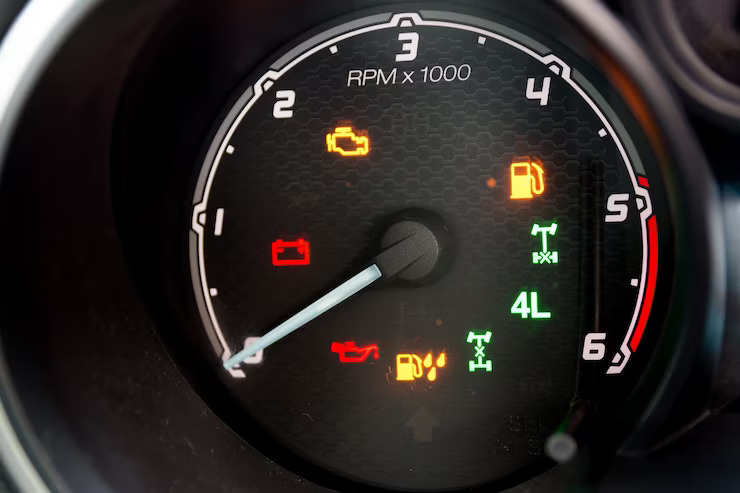Modern vehicles are equipped with a wide array of sensors and electronic systems designed to monitor the performance and health of the engine. When something goes awry, the engine warning light, also known as the malfunction indicator lamp (MIL), illuminates on the dashboard. This small but important light serves as a signal that something is not quite right with the engine. In this article, we will explore the various causes behind engine warning lights and provide some possible solutions.
- Loose or Faulty Gas Cap: One of the most common and easily fixable reasons for the engine warning light to come on is a loose or faulty gas cap. A loose cap can cause the fuel system to lose pressure, triggering the warning light. The solution is simple—tighten the gas cap securely. If the cap is damaged, replacing it should resolve the issue.
- Oxygen Sensor Failure: The oxygen sensor measures the amount of oxygen in the exhaust gases and helps the engine control module (ECM) adjust the fuel-air mixture for optimal performance. When the oxygen sensor fails, it can lead to reduced fuel efficiency and increased emissions. A faulty oxygen sensor needs to be replaced to ensure proper engine functioning.
- Catalytic Converter Issues: The catalytic converter plays a crucial role in reducing harmful emissions by converting toxic gases into less harmful substances. If the engine warning light comes on due to catalytic converter problems, it may indicate a failed converter, a damaged oxygen sensor, or an exhaust system issue. Diagnosing the exact cause requires professional attention, and replacing a faulty catalytic converter is necessary to maintain environmental standards.
- Mass Airflow Sensor (MAF) Malfunction: The MAF sensor measures the amount of air entering the engine to determine the appropriate fuel injection. If the MAF sensor malfunctions or gets dirty, it can disrupt the air-fuel mixture, leading to poor engine performance and reduced fuel efficiency. Cleaning or replacing the MAF sensor is usually the solution to restore proper functionality.
- Spark Plug or Ignition Coil Problems: Spark plugs and ignition coils are essential components for generating the spark that ignites the air-fuel mixture in the engine. Worn-out spark plugs or faulty ignition coils can cause misfires, reduced power, and increased fuel consumption. Replacing damaged spark plugs or ignition coils can often resolve the engine warning light issue.
- Emission Control System Failures: The emission control system includes various components such as the EVAP (evaporative emission control) system, EGR (exhaust gas recirculation) valve, and purge valve. Issues with these components can trigger the engine warning light and result in increased emissions. Professional diagnosis and repair are usually required to fix the specific problem within the emission control system.
- Battery or Alternator Problems: While the engine warning light primarily focuses on the engine itself, it may also illuminate due to battery or alternator issues. A weak battery or a faulty alternator can affect the overall electrical system, leading to irregular voltage supply and potential engine problems. Ensuring a fully charged battery and functioning alternator is essential to avoid engine warning light activation.
In any case, when the engine warning light illuminates, it is recommended to take it seriously and not ignore it, as it indicates a potential problem that requires attention. While some issues may be minor and easily fixable, others can be more complex and require professional assistance. It’s advisable to consult a qualified mechanic or technician who can diagnose the problem accurately using specialized diagnostic tools.
Remember, regular maintenance and timely repairs can help prevent engine warning light issues in the first place. Adhering to the manufacturer’s recommended service intervals and addressing any detected problems promptly will contribute to the longevity and performance of your vehicle’s engine, ensuring a smooth and safe driving experience.











